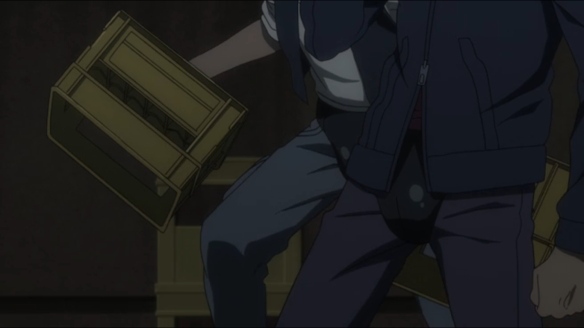There are a couple of primary rules to following modern anime that I’ve discovered since first getting into it in 2007, something I feel I should mention because I violated one of them last week:
1. Never count out a show before it airs. It doesn’t matter if the studio, staff, and source material are all seemingly dog meat, miracles happen more often than you’d think.
2. Dropping anything new after 1 episode is perfectly acceptable. Shows that don’t have a gripping intro in today’s ultra-competitive market are the ones missing a beat. If they don’t care about themselves, neither should I. The inverse is not necessarily true; a good first episode means a lot more than a good third episode, where the staff can afford to throttle down for the sake of a particular story because they know they have their audience.
3. 90% of all game adaptations are bad according to people who played the game. Not so much for manga, where plenty of anime staffers have gotten absurd amounts of praise for storyboards that were basically carbon copies of their award winning source material.
4. Don’t expect people to like or hate the same things you do. Learn to love the party going on around a show or just leave it alone.
5. Doubt Takahiro Omori, Kishi Seiji, Kenji Nakamura, and Taniguchi Goro, under any circumstances, at your own peril. Though they don’t always hit home runs, they can do anything, they’ve proved it, and they just keep grinding like they’re playing Dragon Quest and unmade anime are a bunch of hapless slimes.
True to form, Omori and writer Hideyuki Kurata didn’t take long to go from the introduction of Flamenco Girl’s clashing colors to weave her and the consequences of her actions into the larger tapestry of circumstances. Now she’s been humanized, the cast in general has matured, and we’re set with at least 3 or 4 new emerging plot and character threads that ought to keep things fresh perhaps even to the halfway point.
While last week’s episode had the definite flavor of watching a bunch of unknown plot elements being tossed out (Flamenco girl’s more violent bent, Masayoshi’s resulting disillusionment, Goto’s evolving role on the sidelines), this one brought them from a bunch of purely isolated threads into more of the classic dice-in-a-bowl setup; the guys are becoming much more aware of their role in this phenomenon (more on that in a minute), she’s taking some serious lumps as people used to street fights cotton on to her methods. The moment with the external jock straps was a great paradigm shift that way, and supremely ridiculous at the same time. To say nothing of how she dragged the rest of her idol unit into things.
Meanwhile, now Goto’s listenting to complaints about Flamenco Girl’s behavior, and Masayoshi’s pulled back from real heroing only to find out that even hero shows aren’t particularly idealistic. And both got some stimulus at just the right time (Goto’s girlfriend and the missing wallet, Masayoshi’s grandfather’s package) to start really evolving as a character. Now Masayoshi’s got new gear and a firmer grip on his principles, and Goto is owning his hero-hunter job by adding his own ideas to police policy. In all likelihood, one of those threads is going to get walked down the aisle and be the central focus next week. But who knows? This show is still a hard read, but now it’s a jazzy, dynamic hard read that introduced a remix of the Pink Panther theme and a police officer with the face of the biggest anime icon of all time. That’s something definitely worth keeping up with.
In all seriousness, if that’s not an official tie-in of some kind, it’s there because somebody on this staff is a really fun dude.



Pingback: Preair Impressions: Buddy Complex and Witchcraft Works | Animetics